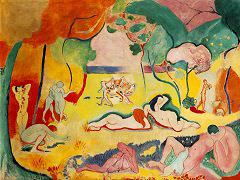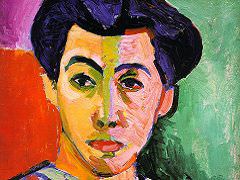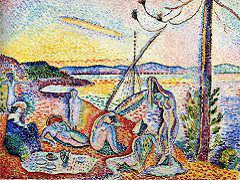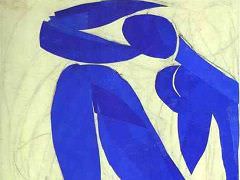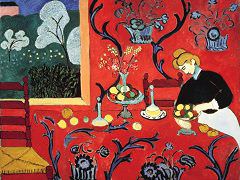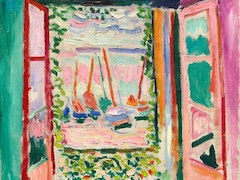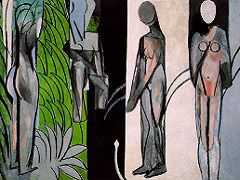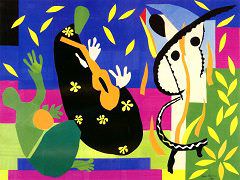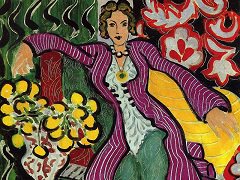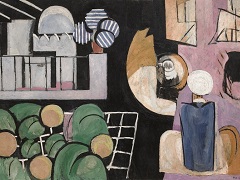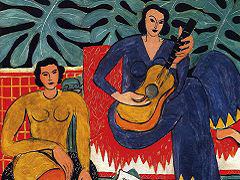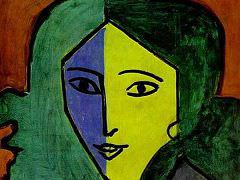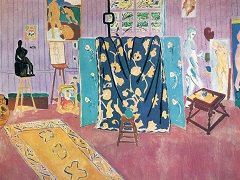Carmelina, 1903 by Henri Matisse
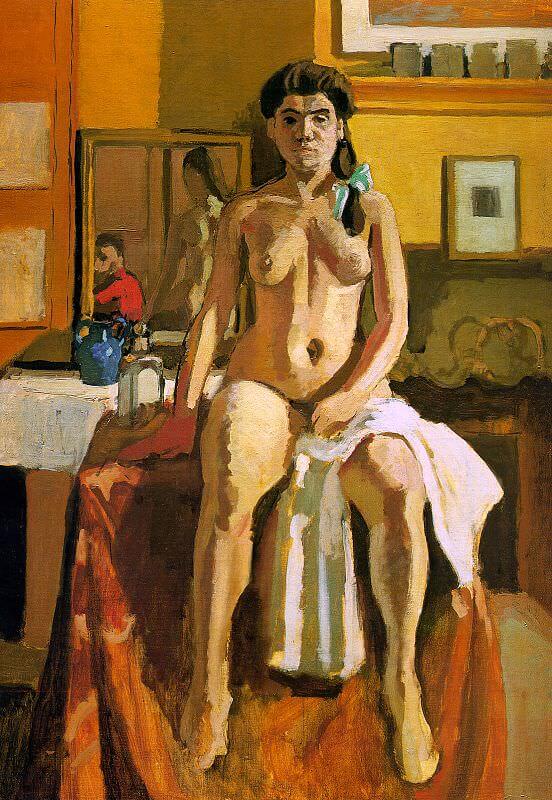
If The Attic Studio, 1903, provides a startling glimpse into the future of Matisse's art during what seems to have been its darkest moment, then Carmelina is the undoubted though thoroughly conventional masterpiece of this somber period, which intervenes between his Proto-Fauve work of about 1897-1900 and his second excursion into Neo-Impressionism in 1904-5. A tightly cemented composition in which the parts mesh like perfectly functioning gears, it sums up the efforts of nineteenth-century realism. Its execution may well have helped Matisse to abandon certain insecurities concerning the styles of the past, which are revealed in his early works after moments of remarkable boldness. Compositionally, it makes an interesting comparison with the series of figure studies, both male and female, that were inaugurated in 1900, and of which Male Model is a remarkable example.
In those earlier works, which were as dominated by blue as Carmelina is dominated by ochers, the pictorial ground is handled with brutal abandon, the painted areas themselves creating vital supporting structures of their own. In this subsequent, regressive masterpiece the artist has had recourse to about every studio prop imaginable, and though their enumeration would not be as tedious as with the 1896 Interior with Top Hat, its picturesque inventory stands in marked contrast to the swatches and patches of pure paint in Male Model. Could Matisse have been thinking of a Salon submission in the working out of Carmelina? It is one of his most rhetorical efforts in conventional compositional language. The body of the model merges with the draperies, and the roundness of her body works against the familiar rectangular foils of picture frames, a mirror, and drawings pinned to the wall. Tying the whole together is the startling contrast of lights and darks, particularly as they strike the robust, pliant body of the model, making of her figure something more stark and angular than it must have been in actuality. It is almost as if Corot, Gustave Courbet, and Paul Cezanne had collaborated in the creation of a single canvas. Even the abrupt frontality of the pose, with the corresponding parallelism of background wall to picture plane, does not mitigate its conventionality, and for this very reason the picture remains something of a puzzle in the context of Matisse's development in this decade. It suggests little of what was to follow in the next few years.

